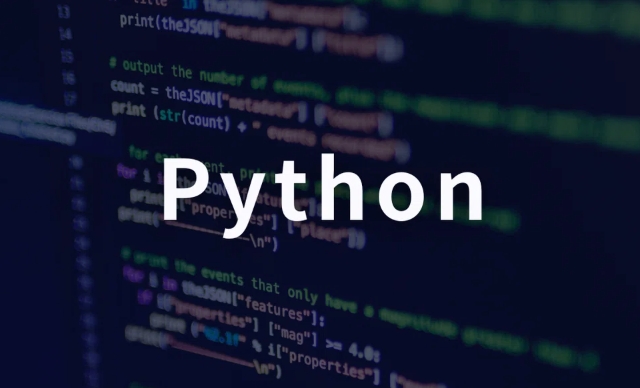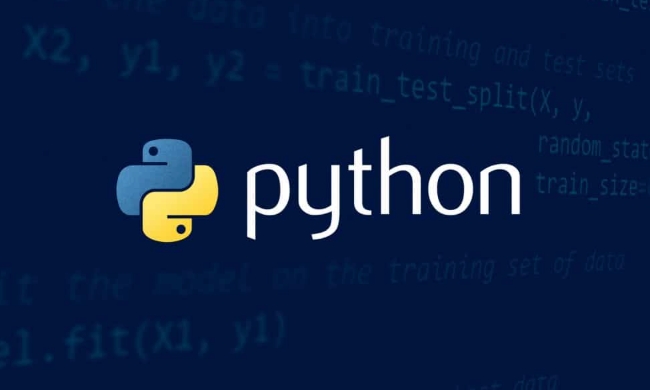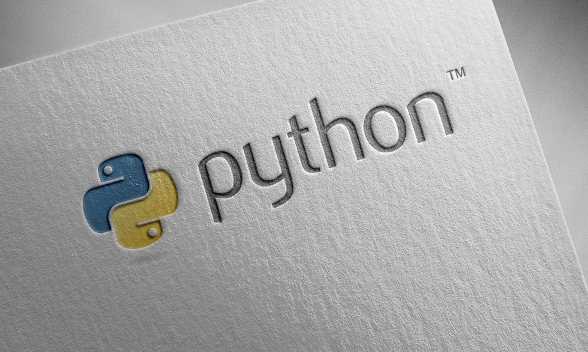In Python, the signal module needs to be used to capture and respond to system events. 1. Use signal.signal(signal_number, handler) to register signal processing functions, such as capturing SIGINT (Ctrl C) or SIGTERM to achieve elegant exit; 2. The processing function can only receive two parameters of signum and frame, and cannot call non-reentrant functions or block for a long time; 3. Only the main thread can receive signals in multithreads, so pay attention to thread safety; 4. Common signals include SIGHUP for reload configuration, SIGUSR1/SIGUSR2 for custom behavior; 5. It is recommended to set only flag bits in signal processing, check and process by the main loop to improve security.

Processing signals (Signal) in Python programs is not complicated, but many developers are not exposed to this part of the content in normal times. The importance of signaling mechanisms will only be realized when the program needs to respond to system events, such as the user pressing Ctrl C to terminate the program, or receiving notifications from the operating system.

The following scenarios and tips can help you use signals more flexibly in actual projects.

How to capture and process signals
Python provides a signal module to register a signal processor. The most common usage is to handle SIGINT (Ctrl C) or SIGTERM (termination signal) to prevent the program from exiting abnormally.
You can set a signal processing function through signal.signal(signal_number, handler) . For example:

import signal
import time
def handle_interrupt(signum, frame):
print("Received an interrupt signal, ready to exit...")
# Here you can perform a cleanup operation exit(0)
signal.signal(signal.SIGINT, handle_interrupt)
While True:
print("Running...")
time.sleep(1)After writing this way, when the user presses Ctrl C, the program will not exit immediately, but will first execute the logic you defined.
What should be noted is:
- The signal processing function cannot accept additional parameters, and can only receive two fixed parameters (signum and frame)
- In a multi-threaded environment, only the main thread can receive signals, so pay special attention to thread safety issues
Common signals and uses
Some common signals and their typical uses are as follows:
-
SIGINT: User input interrupt command (such as Ctrl C) -
SIGTERM: Request process termination (usually used for elegant closing) -
SIGHUP: Control terminal hang or daemon reload configuration -
SIGUSR1,SIGUSR2: User-defined signal, which can be used to trigger specific behaviors
For example, when implementing a background service, you may want to reread the configuration file after receiving SIGHUP instead of restarting the entire service directly.
Avoid common pitfalls in signal processing
Although the signal mechanism looks simple, it is easy to get stuck during actual use:
- Do not call non-reentrant functions in signal processing functions : for example
print(),malloc(), or some library functions may cause deadlocks or crashes. - Avoid long-term blocking of signal processing functions : signal processing should be completed as quickly as possible, otherwise it may affect the operation of the main program.
- Registering the signal processing function multiple times will be overwritten : If you set the same signal processing method in different modules, the latter will overwritten the previous one.
To solve these problems, only flag bits can be set in signal processing, and then checked and processed by the main loop:
import signal
should_exit = False
def handle_interrupt(signum, frame):
global should_exit
should_exit = True
signal.signal(signal.SIGINT, handle_interrupt)
While not should_exit:
# main loop logical pass
# Clean up resourcesThis method is safer and easier to control the process.
Basically that's it. Signal processing is not a high-frequency operation in daily development, but once it is needed, understanding its mechanism can avoid a lot of trouble. The rational use of signal module can help you write more robust and flexible Python programs.
The above is the detailed content of Working with Signals in Python Programs. For more information, please follow other related articles on the PHP Chinese website!

Hot AI Tools

Undress AI Tool
Undress images for free

Undresser.AI Undress
AI-powered app for creating realistic nude photos

AI Clothes Remover
Online AI tool for removing clothes from photos.

Clothoff.io
AI clothes remover

Video Face Swap
Swap faces in any video effortlessly with our completely free AI face swap tool!

Hot Article

Hot Tools

Notepad++7.3.1
Easy-to-use and free code editor

SublimeText3 Chinese version
Chinese version, very easy to use

Zend Studio 13.0.1
Powerful PHP integrated development environment

Dreamweaver CS6
Visual web development tools

SublimeText3 Mac version
God-level code editing software (SublimeText3)

Hot Topics
 What are some common security vulnerabilities in Python web applications (e.g., XSS, SQL injection) and how can they be mitigated?
Jun 10, 2025 am 12:13 AM
What are some common security vulnerabilities in Python web applications (e.g., XSS, SQL injection) and how can they be mitigated?
Jun 10, 2025 am 12:13 AM
Web application security needs to be paid attention to. Common vulnerabilities on Python websites include XSS, SQL injection, CSRF and file upload risks. For XSS, the template engine should be used to automatically escape, filter rich text HTML and set CSP policies; to prevent SQL injection, parameterized query or ORM framework, and verify user input; to prevent CSRF, CSRFTToken mechanism must be enabled and sensitive operations must be confirmed twice; file upload vulnerabilities must be used to restrict types, rename files, and prohibit execution permissions. Following the norms and using mature tools can effectively reduce risks, and safety needs continuous attention and testing.
 How does Python's unittest or pytest framework facilitate automated testing?
Jun 19, 2025 am 01:10 AM
How does Python's unittest or pytest framework facilitate automated testing?
Jun 19, 2025 am 01:10 AM
Python's unittest and pytest are two widely used testing frameworks that simplify the writing, organizing and running of automated tests. 1. Both support automatic discovery of test cases and provide a clear test structure: unittest defines tests by inheriting the TestCase class and starting with test\_; pytest is more concise, just need a function starting with test\_. 2. They all have built-in assertion support: unittest provides assertEqual, assertTrue and other methods, while pytest uses an enhanced assert statement to automatically display the failure details. 3. All have mechanisms for handling test preparation and cleaning: un
 How does Python handle mutable default arguments in functions, and why can this be problematic?
Jun 14, 2025 am 12:27 AM
How does Python handle mutable default arguments in functions, and why can this be problematic?
Jun 14, 2025 am 12:27 AM
Python's default parameters are only initialized once when defined. If mutable objects (such as lists or dictionaries) are used as default parameters, unexpected behavior may be caused. For example, when using an empty list as the default parameter, multiple calls to the function will reuse the same list instead of generating a new list each time. Problems caused by this behavior include: 1. Unexpected sharing of data between function calls; 2. The results of subsequent calls are affected by previous calls, increasing the difficulty of debugging; 3. It causes logical errors and is difficult to detect; 4. It is easy to confuse both novice and experienced developers. To avoid problems, the best practice is to set the default value to None and create a new object inside the function, such as using my_list=None instead of my_list=[] and initially in the function
 What are the considerations for deploying Python applications to production environments?
Jun 10, 2025 am 12:14 AM
What are the considerations for deploying Python applications to production environments?
Jun 10, 2025 am 12:14 AM
Deploying Python applications to production environments requires attention to stability, security and maintenance. First, use Gunicorn or uWSGI to replace the development server to support concurrent processing; second, cooperate with Nginx as a reverse proxy to improve performance; third, configure the number of processes according to the number of CPU cores to optimize resources; fourth, use a virtual environment to isolate dependencies and freeze versions to ensure consistency; fifth, enable detailed logs, integrate monitoring systems, and set up alarm mechanisms to facilitate operation and maintenance; sixth, avoid root permissions to run applications, close debugging information, and configure HTTPS to ensure security; finally, automatic deployment is achieved through CI/CD tools to reduce human errors.
 How can Python be integrated with other languages or systems in a microservices architecture?
Jun 14, 2025 am 12:25 AM
How can Python be integrated with other languages or systems in a microservices architecture?
Jun 14, 2025 am 12:25 AM
Python works well with other languages ??and systems in microservice architecture, the key is how each service runs independently and communicates effectively. 1. Using standard APIs and communication protocols (such as HTTP, REST, gRPC), Python builds APIs through frameworks such as Flask and FastAPI, and uses requests or httpx to call other language services; 2. Using message brokers (such as Kafka, RabbitMQ, Redis) to realize asynchronous communication, Python services can publish messages for other language consumers to process, improving system decoupling, scalability and fault tolerance; 3. Expand or embed other language runtimes (such as Jython) through C/C to achieve implementation
 How can Python be used for data analysis and manipulation with libraries like NumPy and Pandas?
Jun 19, 2025 am 01:04 AM
How can Python be used for data analysis and manipulation with libraries like NumPy and Pandas?
Jun 19, 2025 am 01:04 AM
PythonisidealfordataanalysisduetoNumPyandPandas.1)NumPyexcelsatnumericalcomputationswithfast,multi-dimensionalarraysandvectorizedoperationslikenp.sqrt().2)PandashandlesstructureddatawithSeriesandDataFrames,supportingtaskslikeloading,cleaning,filterin
 How can you implement custom iterators in Python using __iter__ and __next__?
Jun 19, 2025 am 01:12 AM
How can you implement custom iterators in Python using __iter__ and __next__?
Jun 19, 2025 am 01:12 AM
To implement a custom iterator, you need to define the __iter__ and __next__ methods in the class. ① The __iter__ method returns the iterator object itself, usually self, to be compatible with iterative environments such as for loops; ② The __next__ method controls the value of each iteration, returns the next element in the sequence, and when there are no more items, StopIteration exception should be thrown; ③ The status must be tracked correctly and the termination conditions must be set to avoid infinite loops; ④ Complex logic such as file line filtering, and pay attention to resource cleaning and memory management; ⑤ For simple logic, you can consider using the generator function yield instead, but you need to choose a suitable method based on the specific scenario.
 How do list, dictionary, and set comprehensions improve code readability and conciseness in Python?
Jun 14, 2025 am 12:31 AM
How do list, dictionary, and set comprehensions improve code readability and conciseness in Python?
Jun 14, 2025 am 12:31 AM
Python's list, dictionary and collection derivation improves code readability and writing efficiency through concise syntax. They are suitable for simplifying iteration and conversion operations, such as replacing multi-line loops with single-line code to implement element transformation or filtering. 1. List comprehensions such as [x2forxinrange(10)] can directly generate square sequences; 2. Dictionary comprehensions such as {x:x2forxinrange(5)} clearly express key-value mapping; 3. Conditional filtering such as [xforxinnumbersifx%2==0] makes the filtering logic more intuitive; 4. Complex conditions can also be embedded, such as combining multi-condition filtering or ternary expressions; but excessive nesting or side-effect operations should be avoided to avoid reducing maintainability. The rational use of derivation can reduce






